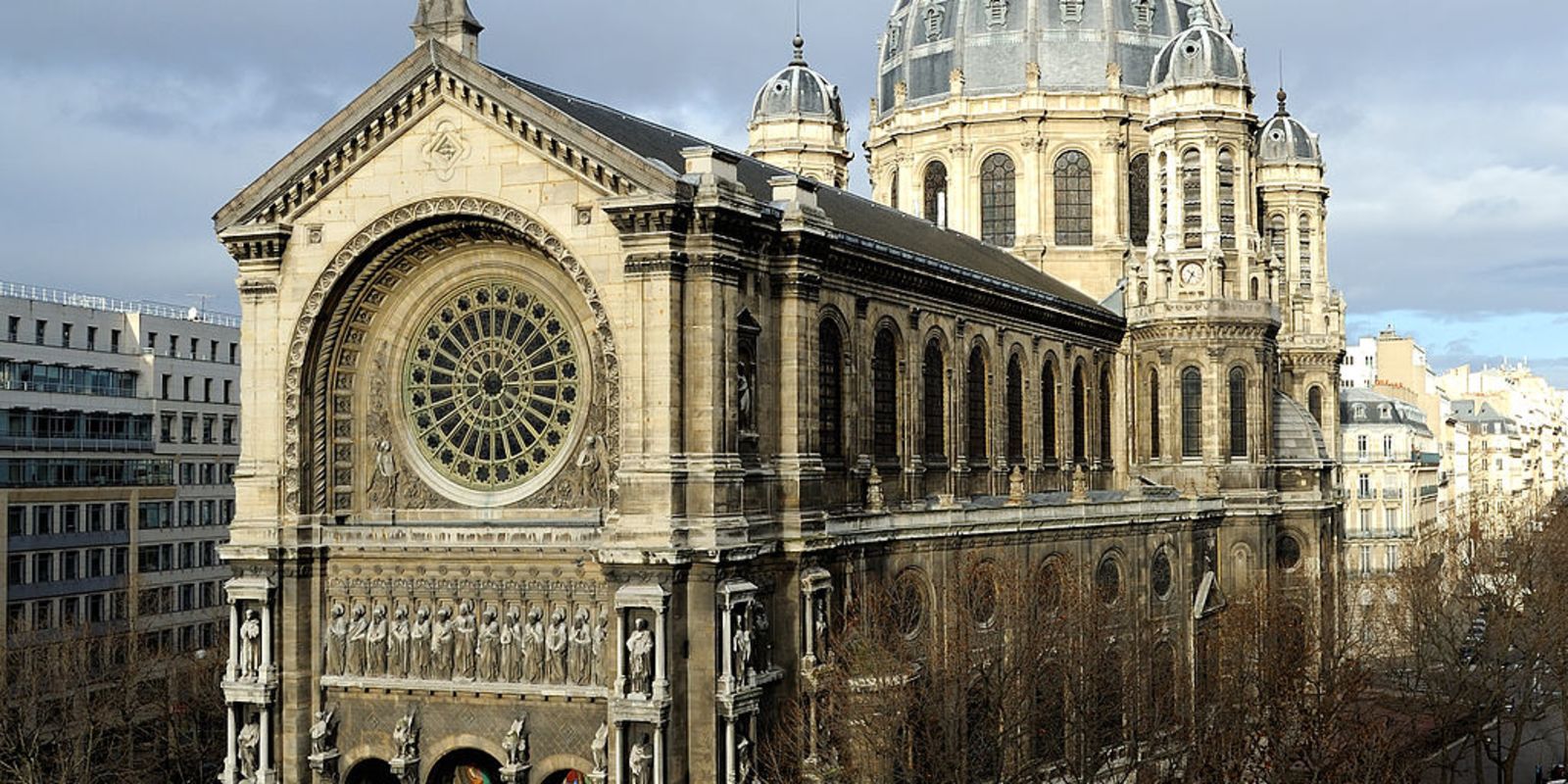Itinerary
At the South of Batignolles and Montmartre, North of Sentier, get entertained then enjoy a relaxing walk in the 9th district.

Theaters, bars, shops, restaurants galore… Everything at the Grands Boulevards seems to be made for entertainement. But as soon as you head up North, let’s say between Saint-Lazare train station and du Faubourg-Poissonière street, another world smoothly unfolds : a quieter, more discrete one, as some kind of breathing space before Montmartre.
We’ll start in the 8th district, form the already buzzing Saint-Augustin square, and we’ll perform an almost full loop that only the railways will prevent us to complete. We’ll cross both worlds described above, so you’ll be able to focus on shopping and leisure at some point, architecture and chilling out at another, all in the same itinerary.
We’ve included a place to eat – don’t worry, you won’t be making any detour coming there, and it won’t take you too long ; on the other hand, you’ll have a genuine parisian experience. We also had parents of young children in mind when including stop 6. So really, we hope that whatever mood you are in, and no matter who or how you’re following it, this itinerary will be most pleasurable.
It is doable in a little more than 2 hours but given all the opportunities you’ll have along the way, we bet it will take a bit longer. In any case, you can easily customize it.
7 stops
1. Saint-Augustin Church
Architect Victor Baltard (who built Les Halles in Paris), was asked by Napoléon III to work on this eclectic church, mixing roman and byzantine styles, between 1860 et 1871.
Almost 100 metres in length, with a dome height of more than 60 metres, it was constructed about a metal frame. Its unusual layout (a narrow facade, a very large choir) and this metal structure is what makes the church different.
Located at the corner of traffic-heavy Haussmann and Malesherbes boulevards, it unfortunately doesn’t provide as much silence as it should.
2. Société Générale Head Agency
Yes, this is a bank agency (well, head agency at least), not a monument per se. But, built by architect Jacques Hermant at the beginning of the XXth century, the seamless 7-building Art Nouveau complex is worth seeing during business hours.
The glass dome, the mosaics, and the impressive safe deposit room with its huge huge doors, are something to remember.
3. The Bouillon Chartier
You must go there at least once. At the Bouillon Chartier, founded in 1896 and classified as histoic monument, you’ll find the quintessential parisian table service, pushed to the extreme.
In its large room with columns and a menazzine, you’ll eat quickly (even if you’ll probably have to wait in line before at the entrance), often sharing your table with other customers, and the check will be handwritten straight on the paper tablecloth. But this doesn’t mean that the food is bad, on the contrary.
4. Le Grand Rex
Le Grand Rex is the largest cinema, theater and music venue in Paris. An atmospheric theatre, the cinema features a starred “sky” overhead, as well as interior fountains. The cinema is a landmark of Art Deco style architecture. It features the largest screen in Europe, called grand large.
The theatre was built for Jacques Haïk, a wealthy film producer, and designed by Auguste Bluysen, a French architect. John Eberson, a Romanian-American, served as a consulting architect.
Construction began in 1931, and the theater opened its doors the following year on the night of December 8. A French government decree on the 5 of October 1981 listed the Cinéma Rex, its interior decor and facades, as a “Monument National”.
Source : Wikipedia contributors, “Le Grand Rex“
5. Saint-Eugène-Sainte-Cécile Church
Commonly called Saint-Eugène, this beautiful church with lots of color and light, was build between 1854 and 1856 by Boileau and Lusson. The facade is a XIIIth century mockup, but the inside is neo-gothic, and the church is the first full-metal one in Paris.
On January 10, 1857, writer Jules Verne married Honorine Viane here. And since 1989, the mass is celebrated in the church both under the Paul VI ritual (that is, in French) and under the St Pius V ritual (in latin, priest turning its back to the faithful).
6. Hôtel Amour
Several rooms of this trendy little hotel have been designed by renowned artists such as, for example, Sophie Calle.
7. Liege Subway Station
One of the few (along with Arts-et-Métiers) interesting subway stations in Paris, this one is famous for its ceramic frescos. It also has staggered platforms, which is quite rare in Paris.
The station used to be called “Berlin” prior to World War I. Renamed after the nearby rue de Liège, it was refurbished in 1982 and given its ceramic decorations made in Welkenraedt, Belgium, which evoke the landscapes and monuments of the Province of Liège.
LeisureFamilyShopping
Map, navigation, practical information, extra pictures and more are available on the Paris Parcours app.
